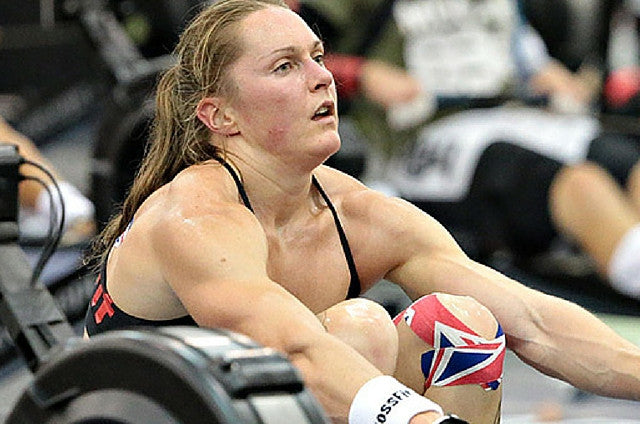As a CrossFit athlete, I used to think we were butchering Olympic sports—one at a time.
I often ran into athletes from other sports, like weightlifters and rowers, who would point to sights they saw during throwdowns and CrossFit competitions to prove their point. Sights like a gnarly-looking clean during a max clean event, where the athlete somehow finds a way to stand up despite the bar being down at his nipples, his back being rounded, and his heels lifted off the ground—the kind of laboured, ugly lift that would only ever get applauded by CrossFit athletes. Meanwhile, rowers I knew would point to CrossFit athletes’ short, choppy, rushed rowing strokes—generally accompanied by flailing heads and curved spines—giving them a license laugh.
Of course, athletes from these other sports, didn't understand point of CrossFit. Unlike rowers and weightlifters—specialists who train and compete in just one or two skills their entire careers—the point of CrossFit is essentially to become above-average, but not necessarily the best—at everything.
Here's the thing, though: Despite CrossFit athletes’ intentions to become just decent at everything, in the last few years, the top athletes among us have managed to find a way to become not just average, but elite at other Olympic sports. Despite choosing not to specialize, and not to devote our lives to just one or two skills, our athletes are now impossible to ignore, even to top-level lifters and rowers.
Two examples:
Weightlifting: Although you can make the argument that Iceland isn’t exactly a weightlifting powerhouse, both Annie Thorisdottir and Katrin Davidstottir competed at the World Championships last year. No, they weren't about to win medals, but to compete at a World Championships in your ‘secondary sport' is pretty incredible, to say the least. And my prediction is we’ll see at least one or two CrossFit athletes qualify and compete at the Olympic Games in Rio this summer. Camille Leblanc-Bazinet certainly has a chance. When you compare Bazinet to Canadian weightlifter Annie Moniqui, who represented Canada at the 2012 London Olympics in the 58 kg division, Bazinet’s numbers do more than just match-up. Moniqui snatched 85-kg (187 lb.) and clean and jerked 105 kg (231 lb.) in London—both of which are well below Bazinet's best lifts. Of course, learning how to hit those numbers in the stressful weightlifting competition environment is a whole other ball game, but on paper there are CrossFit athletes with the potential to hang in there with elite weightlifters who are gunning for the Olympics this summer.

Rowing: Earlier this year, former CrossFit Games champion Sam Briggs broke the 500m lightweight women’s erg world record with an insanely fast time of 1:33.4. And her 2-km erg time, on the same day, was a world-class lightweight women’s time of 7:05.1.
And even when we look beyond the very best CrossFit women, like Briggs, Bazinet, Thorisdottir and Davidsdottir, other lesser known CrossFit females, such as Mikaela Norman, a European CrossFit athlete, who was 12th at the Meridian regional competition in 2015, are also making waves. Norman recently put up a 5-km row time at The Athlete Games that could get her carded as a national team rower. Although rowers don’t test their 5 km erg score—the 2 km and 6 km ergs are the most common tests for rowers—Norman’s average split time of 1:52.1, done with apparent ease, is a very legitimate 5-km erg time in the rowing world. Especially considering she allegedly sped up at the end, looked like she had more in the tank, and did just what she needed to do to win. With that in mind, it's safe to assume she could pull a much faster time than her already impressive 18:41. As a former rower, I also think it’s safe to say with just a few months of training, Norman, who stands more than 6’0” tall and has a great rower’s body, could find herself training for the Olympics in that sport if she wanted to.
I guess the point of all this is just to say, “I’m proud of us.”


Leave a comment: